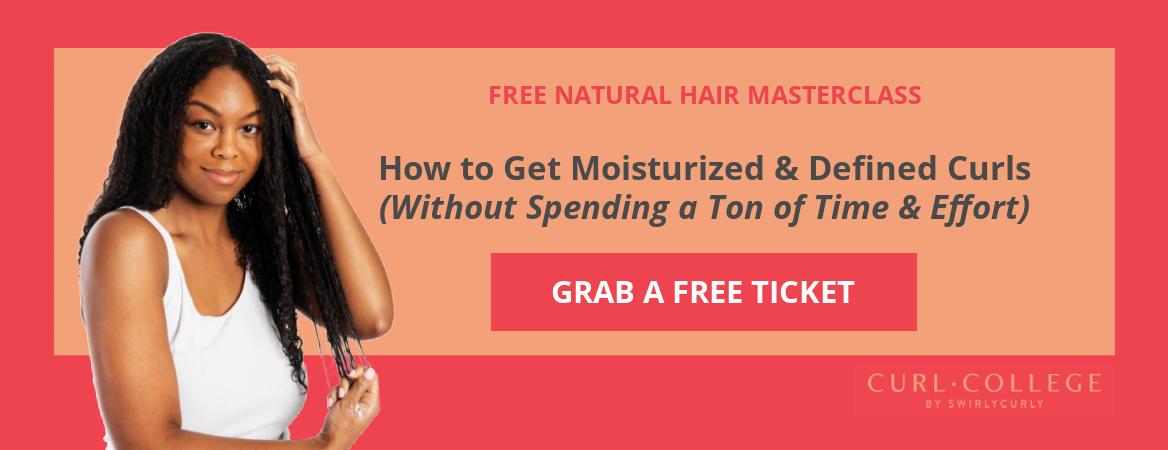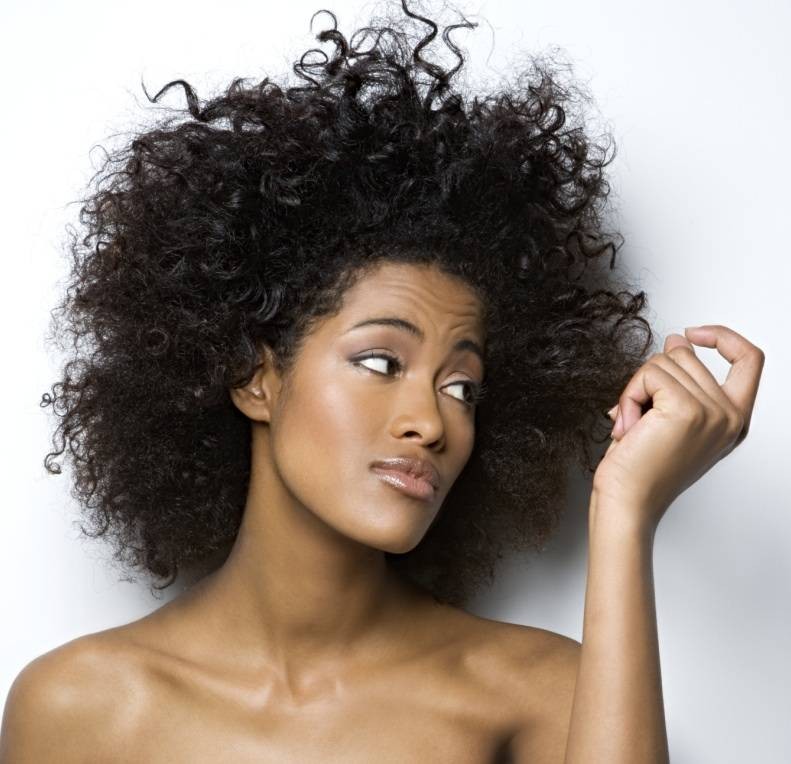4 Reasons Your Hair Is Not Retaining Moisture
If your natural hair is showing signs of damage, such as breakage and split ends, it may actually just be dry. Our hair can be perfectly healthy, but may be having issues retaining moisture.
There are several reasons why your hair may be having difficulty holding and locking in product. More than one reason can be true for you.
In this post, you’ll get four reasons why your natural hair is not responding correctly to products and how to solve these issues going forward.
1. Do You Know Your Hair Porosity?
Knowing and understanding your hair porosity is important because it directly affects the way your curls respond to products and how you apply those products. Essentially, it is your hairs ability to absorb and retain moisture. There are three different types of hair porosity: low, medium, and high.
Low porosity
When your hair is considered low porosity, it means that your hair does not absorb water and products easily. There are a lot of things that you can do to open up your hair shaft and cuticles that you'll learn about a little later.
Medium porosity
Medium porosity hair also called normal porosity is when your hair cuticles aren't too tight or too loose. Curly naturals who find their hair easily retains moisture, always looks shiny and healthy, and air dries pretty quickly, often times have medium porosity.
High porosity
High porosity hair is the complete opposite of low porosity because your hair retains moisture really easily! Your curls will retain water and oils and so it's best to use light weight product, as to not weigh your hair down.
The most popular way to test and see what your hair porosity is, is the water test. If the strand sinks, you have high porosity and if it floats, you have low porosity. And of course if you hair neither sinks or floats and stays in the middle of the glass, you have medium porosity.
- Step #1: Take a single strand of fallen hair and wash it with shampoo to make sure it’s free of conditioners and oils.
- Step #2: Drop the strand into a glass of water.
- Step #3: Pay attention to whether the strand floats, sinks, or stays in the middle.
You can then start to buy products that cater to your hair type, such as our Mango Moringa Moisture Max Line, which is good for all hair porosities!
2. Are You Using The Right Products?
It is a popular belief that oils and butters moisturize your curls and provide you the maximum moisture that you can get. Oils and butters lock in moisture from leave in conditioners and styling creams.
Knowing and understanding your hair type, which includes not only your hair porosity, but your curl pattern, hair density, and hair thickness is key. Here are things to look out for and signs that you may not be using the correct products for your curls.
-
Frizzy Strands. If your hair is frizzy, then it is dry and your curls may be lacking proper moisture. Use products like our Mango Moringa Styling Cream to really moisturize your strands from root to ends.
-
Increased Breakage. Breakage is never a good sign when it comes to natural hair. It is so frustrating when you are using products that you know work, but your ends are still breaking off. Your hair may not be taking in new product because of product buildup. Make sure to use products like our Mango Moringa Shampoo to help get ALL the product out of your hair, while not removing your natural oils
-
Your Hair Is Weighed Down. As we previously talked about, porosity is really important when deciding what products to use. Curly naturals with high porosity are able to easily absorb water and products which can easily weigh your curls down and make your hair heavy. It's important to know how heavy or light weight the products you use are. Our entire Mango Moringa Moisture Max System is lightweight, but can be used for all hair types and textures.
- Flaking. Flaking comes from product build up, usually from gels. Most of the time, a little gel goes a long way. Gels are an additional step you can take to lock in the moisture and define your curls. If your gel flakes, you may want to experiment with using the gel with a different cream because the products just may not mesh well together.
3. Are You Protecting Your Hair At Night?
There are several ways to protect your curls at night and everyone's nighttime routine is different. It's okay to have different routines, but the important thing is that you have one.
Bonnets are a great way to protect your hair if they are satin lined. If you don't prefer to sleep with your hair covered, it is important to use a silk or satin pillow case. Silk and satin are the best materials for our curls because they minimize the friction and decreases your chance of breakage
If you do not choose to sleep with a satin/silk lined bonnet or pillow case, most of the product will rub off onto your cotton pillow cases and your hair will definitely appear and feel dry; because it is.
4. Are You Using Water Based Products?
We have been told time and time again that oil plays a very important part in helping to moisturize our curls. Oil does not provide moisture, so it's important that we're only using it to lock in the moisture. Water will be your bestfriend!
Water based products, like our Mango Moringa Moisture Max Line, are important because our curls love water and we are made up of mostly water. If the products you are using do not have water as the first or second ingredient, it's probably not the best for your curls.
In addition to water based products, you should try to wet your hair daily. Even if it is just a quick spritz of water, your hair will thank you. There are a lot of factors that affect how much water is in your hair so you should always do your part with adding water because you can never have too much.
Even though you are using water based products, always remember that it is best to add product into your hair soaking wet. This allows for all of your curls to get saturated with product and helps to achieve better curl definition.
How To Allow More Moisture Into Your Curls?
So the billion dollar question is how do you start to re-moisturize your hair after you notice a lack of moisture!? There are so many things you can do to restore moisture back into your curls and get the hair that you love.
-
Add Heat To Your Routine. It is a popular belief that all heat damages our curls. Did you know you can actually use heat on a low setting to open up your hair cuticles? This is especially important for curly hair that have low porosity. Opening your cuticles allows for the products to really reach your strands and lock in better.
-
Try Wash n' Dry Method. In addition to using heat, such as a diffuser, to help product to soak into your hair, you can try our Wash n' Dry method. A lot of curly naturals do not prefer to do wash n go's because their hair does not look the same dry as it does when it is wet. The Wash n' Dry allows you to not only maximize moisture by locking it in with heat, but it guarantees that your hair looks the same way wet and dry. Your curls will be elongated, defined, and moisturized. Learn more about our Wash n' Dry method in CurlCollege.
- Create Nighttime Routine. It's great for your curls to look good during the day, but we all want to get more than one good hair day. Your styles can last 4-5 days with proper care. Sleeping with a satin lined bonnet at night or a satin/silk pillow case will help you to keep your curls moisturized and get great day 3 and day 4 hair.
- Keep Your Hands Out Of Your Hair. This may sound silly at first, but touching your hair too much has the same effect as not protecting your curls at night. The more we touch our hair, the more product that gets on our hands and out of our hair. Let your curls breathe and admire them in the mirror without consistently touching them.
Let us know what method you like the most and what works for you!


